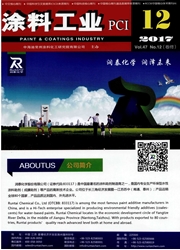

 中文摘要:
中文摘要:
通过自制Cu—TiO2光催化涂料,针对光催化涂料降解甲醛气体的效果与光催化时间的关系,利用环境测试舱模拟可见)匕源下的室内环境,从而获得甲醛气体浓度实测值。根据甲醛气体浓度实测值,分析GM(1,1)预测模型所存在的缺陷,在此基础上提出采用指数平滑技术和灰色理论相结合的方法构建一新的EX—GM(1,1)预测模型。该模型不仪呵以大大减少实测值的随机性,还可以将实测值序列变换成规律性强的呈指数变化的序列,从而提高模型的预测精确度,其平均误差为-0.507%,尤其提高了Cu—TiO2光催化涂料降解甲醛效果预测过程后期(420—510min)的精确度,其平均误差为-0.168%.EX—GM(1,1)预测模型的建立将为比催化涂料性能的研究提供一定的技术支持。
 英文摘要:
英文摘要:
According to the relationship between the degradation effect of photocatalytic coating to formal- dehyde and the time of phutoeatalytic activity, the gasous formaldehyde concentration can be measured by u- sing self-made Cu -TiO2 photocatalytic coating in the simulated visible light environmental test chamber. The measured formaldehyde concentration was used to analyze and predict the limitation of the forecasting model GM ( 1 , 1 ) , then to establish a new method named EX - GM ( 1 , 1 ) , which combined the exponential smoothing with grey model. The new model not only decreased the randomness of measured values remark- ably, but also transformed the irregular values to a sequence with exponential movement, thus improving the fi~reeast precision of the model, of which average er,'or was -0. 507%. Especially it improved the accuracy of the last stage in the whole prediction process (420 -510 min), and the average error was only - 0. 168%. The establishment of the forecast model EX- GM( 1,1 ) will provide technical support for the re- search on the photocatalytic coatings properties.
 同期刊论文项目
同期刊论文项目
 同项目期刊论文
同项目期刊论文
 Combustion properties and thermal degradation behaviors of biobased polylactide composites filled wi
Combustion properties and thermal degradation behaviors of biobased polylactide composites filled wi 期刊信息
期刊信息
